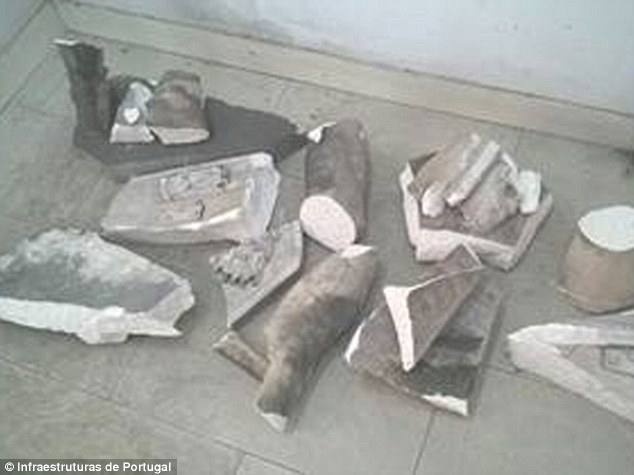
Elmgreen & Dragset “Prada Marfa” / various
The exterior of this outdoor installation, a simulated Prada storefront created by Elmgreen & Dragset, was extensively damaged in March 2014. In addition to being covered in sprayed and written graffiti, the small structure was splattered in blue paint and covered in signs for popular espadrilles brand TOMS shoes; politically themed pamphlets were also scattered on the premises. The pamphlets included the following:
“TOMS Marfa will bring greater inspiration to consumer Americans to give all they have to developing nations that suffer disease starvation and corruption … So long as you buy TOMS shoes, and endorse Jesus Christ as your savior, welcoming the ‘white’ him into your heart. So help you God, otherwise your damned to hell … Welcome to your Apocalypse?…The irony of Prada Marfa, it’s fake. Prada Marfa has no representation of Texas and Southwest North America. Prada Marfa is a relic of a Bourgeois not so distant past; serving today’s hyper reality of a blank canvas.”


The responsible party was eventually identified as Waco resident Joseph Magnano. Magnano, an artist/activist who tagged under the moniker “9271997,” apparently conceived the act as both political activism and artistic gesture. He eventually plead guilty to two counts of misdemeanor criminal mischief, thereby escaping jail time. On top of a $1,000 fine, Magnano paid an additional $10,700 in restitution to Ballroom Marfa, the nonprofit organization which commissioned and maintains the installation. Using that money, the edifice was able to be restored.
In a subsequent written interview, Magnano attempted to explain his actions:
“I didn’t appreciate Prada Marfa. It seemed to portray this image of persevering the iconic, the elite, the brand. I am really interested in modernization, reorientation, and the meaning of a temporary structure. As well, watching the tourist drive up to get their picture seemed very plastic culture, amusement park like… I see a sculpture like “Prada Marfa,” keeps society compressed into a certain reality, which isn’t necessarily true. I mean, who wants to be defined by consumerism and branding? I sure the hell don’t, so I wanted to test and reorientate the meaning of Prada Marfa…I didn’t target Prada, because Prada is so 2005. Prada is too high-end for the majority of Americans. TOMS isn’t, though. TOMS fits the mainstream bill … considering all the austerity and cooperate governing that takes place; America seems to have become more of a TOMS brand, instead of Prada.”
He also denied having any particular problem with the artists themselves:
“Using “Prada Marfa” as a canvas was not in anyway an attack on the artists. In fact, I am grateful they created “Prada Marfa,” because without it, TOMS Marfa couldn’t have temporarily existed. I’m not familiar with any of their [other] work. I didn’t even know they made “Prada Marfa” until I researched it.”


This was not the first time the installation had been vandalized. Just days after its 2005 opening, unidentified parties attempted to tear the doors out using a chain; over the years, taggers have made regular use of the building’s exterior. In each instance, the damage was able to be repaired.




























